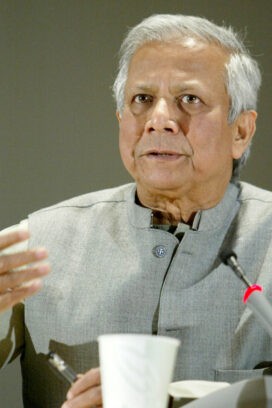Facts about Muhammad Yunus
Muhammad Yunus Biography
Muhammad Yunus earned the nickname “banker to the poor” by giving tiny cash loans — often the equivalent of a few dollars — to the poorest of the poor in Bangladesh. That simple idea grew into an international movement so vibrant that Yunus was awarded the 2006 Nobel Prize for Peace. Yunus earned a Ph.D. in economics at Vanderbilt University in 1969. He taught at Middle Tennessee State University before returning to Bangladesh in 1972 to teach economics at Chittagong University. According to a now-famous story, his first loan was given to a group of very poor women from the village of Jobra in 1974; the amount was the equivalent of $27. Two years later, in 1976, Yunus founded the Grameen Bank to make such loans on a wider scale, mostly to people with no collateral who would not be served by typical banks. The notion became known as microcredit, and as it spread to other countries it gave thousands of people the opportunity to pull themselves out of abject poverty. Yunus and Grameen were jointly given the Nobel Prize in 2006. By that time the bank had helped more than six million borrowers, the vast majority of them women. In awarding the prize, the Nobel Committee stated: “Lasting peace can not be achieved unless large population groups find ways in which to break out of poverty. Microcredit is one such means.” Yunus was given the Presidential Medal of Freedom by President Barack Obama in 2009.
Extra credit
Yunus announced that he would donate his share of the $1.4 million in Nobel prize money to a variety of charities… Grameen means “village” — hence, the village bank… Yunus attended Vanderbilt on a Fulbright scholarship… Yunus’s home town of Chittagong was part of India until the Partition of 1947, when the area became East Pakistan. After a 1971 war of independence with Pakistan, the country became known as Bangladesh.

